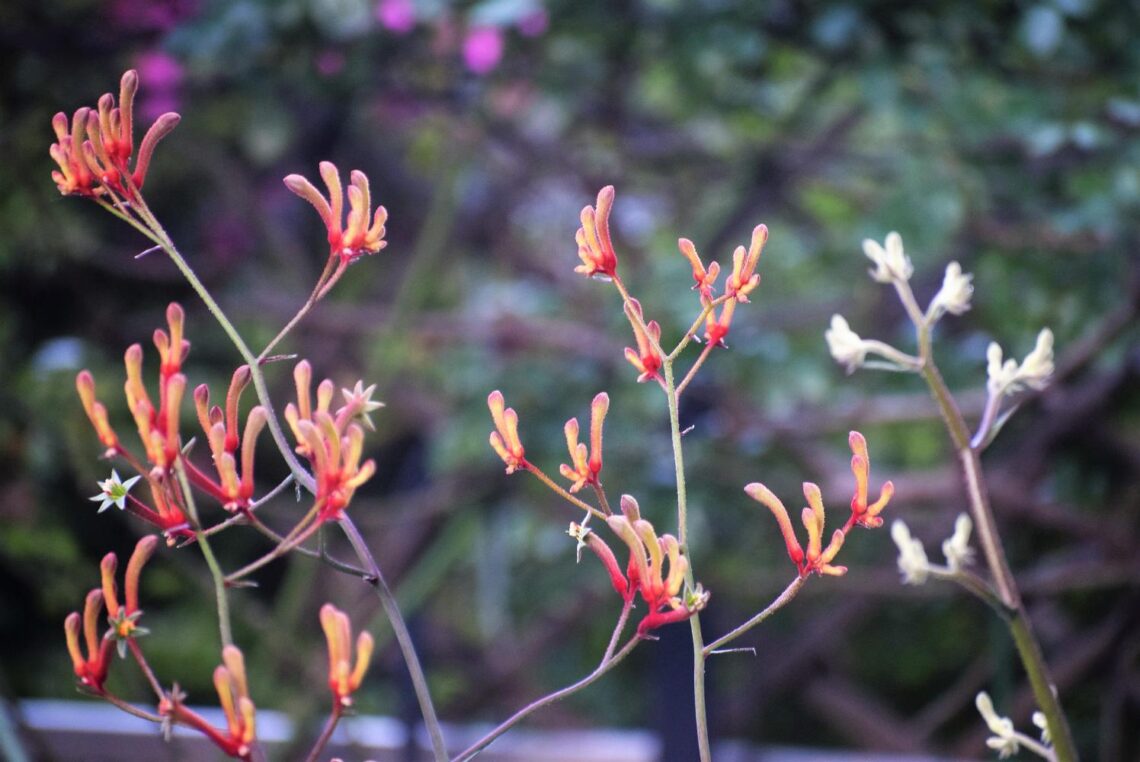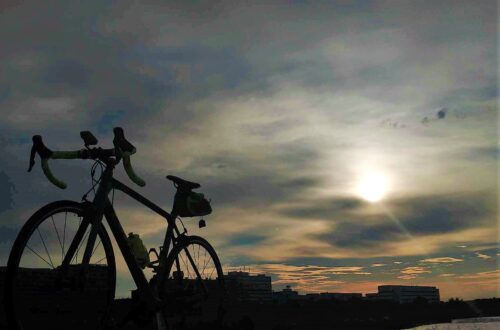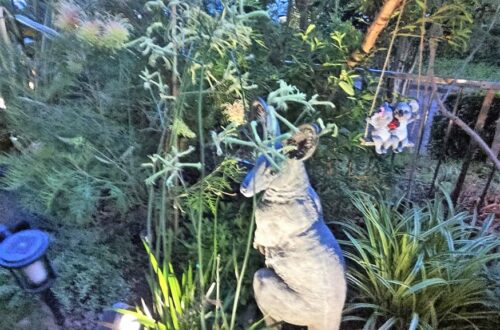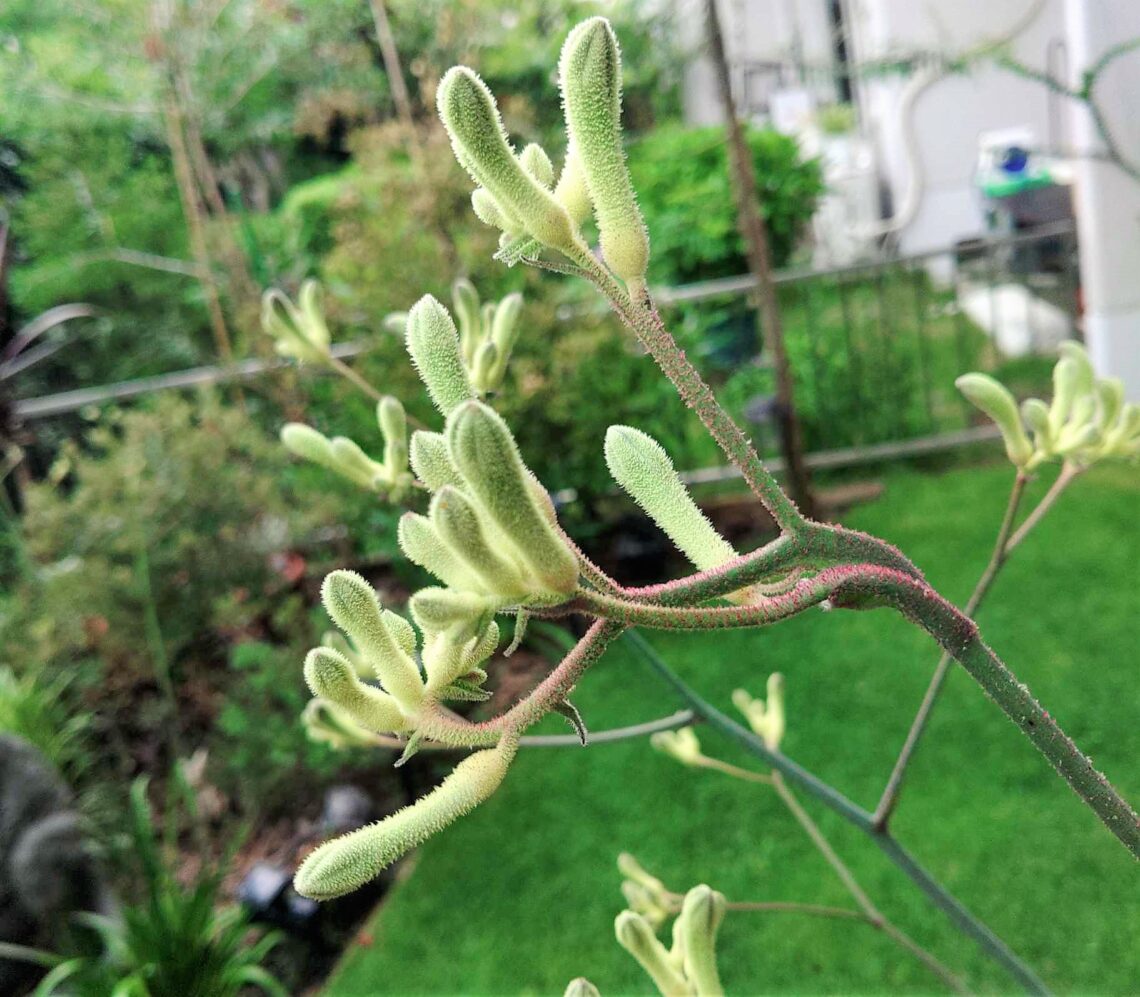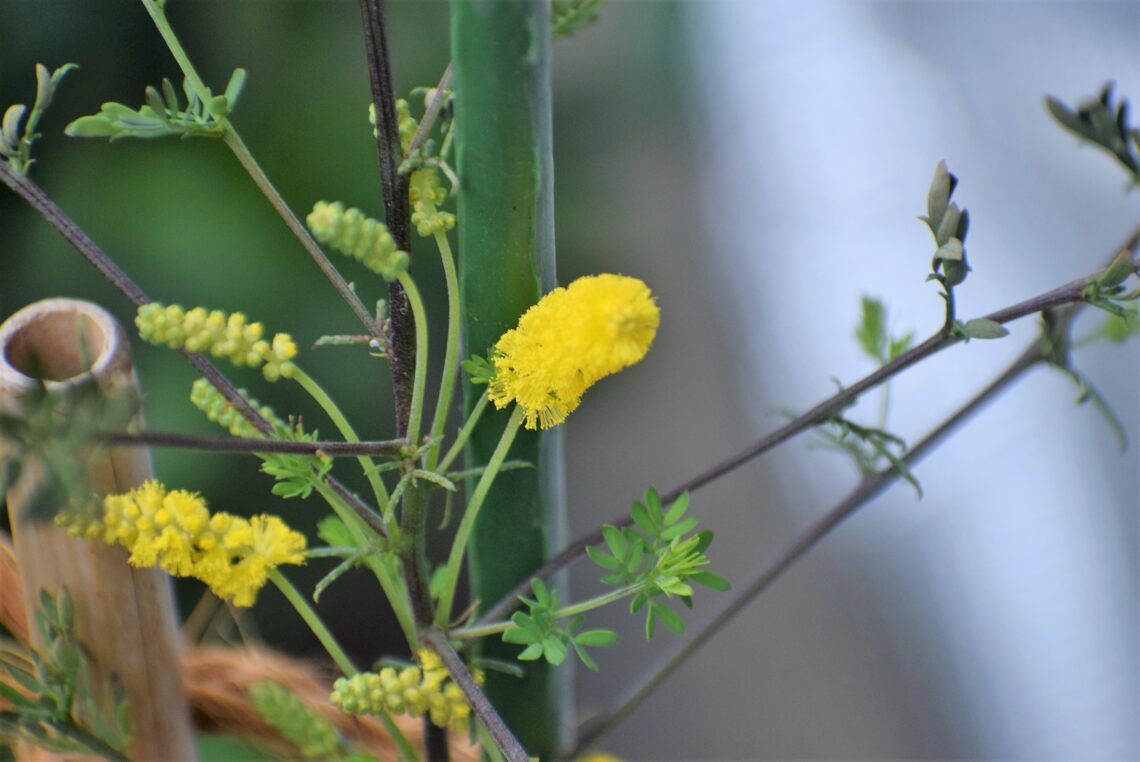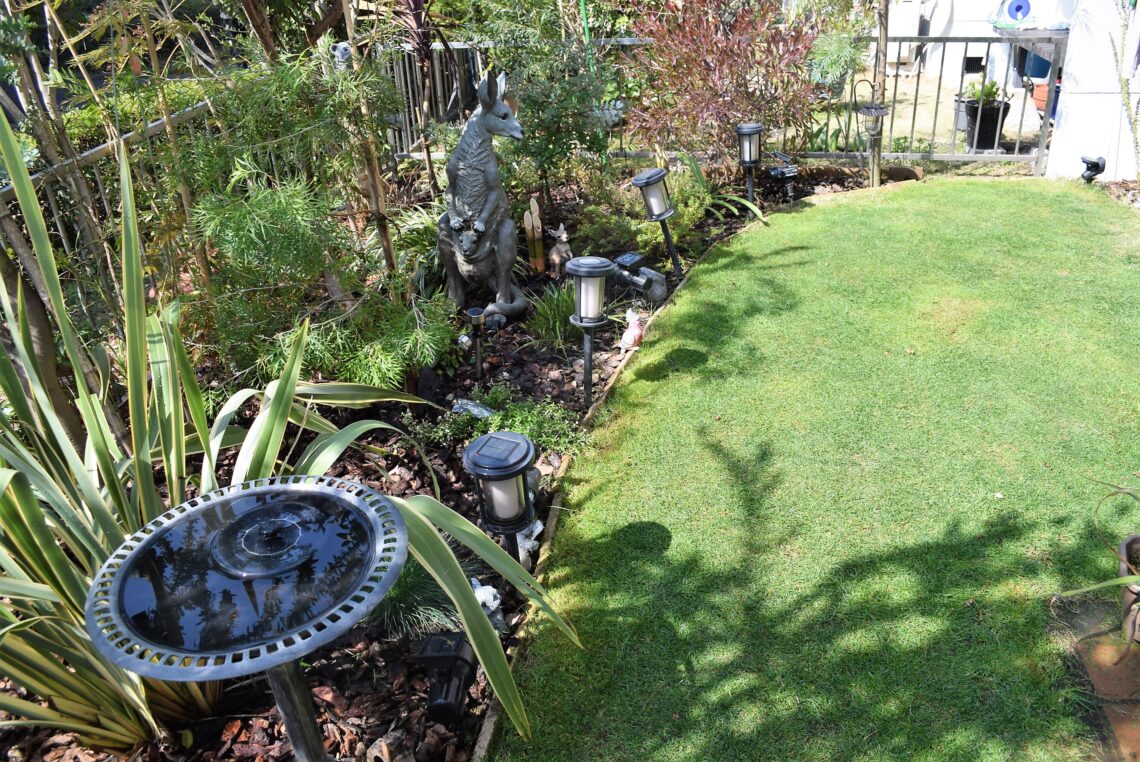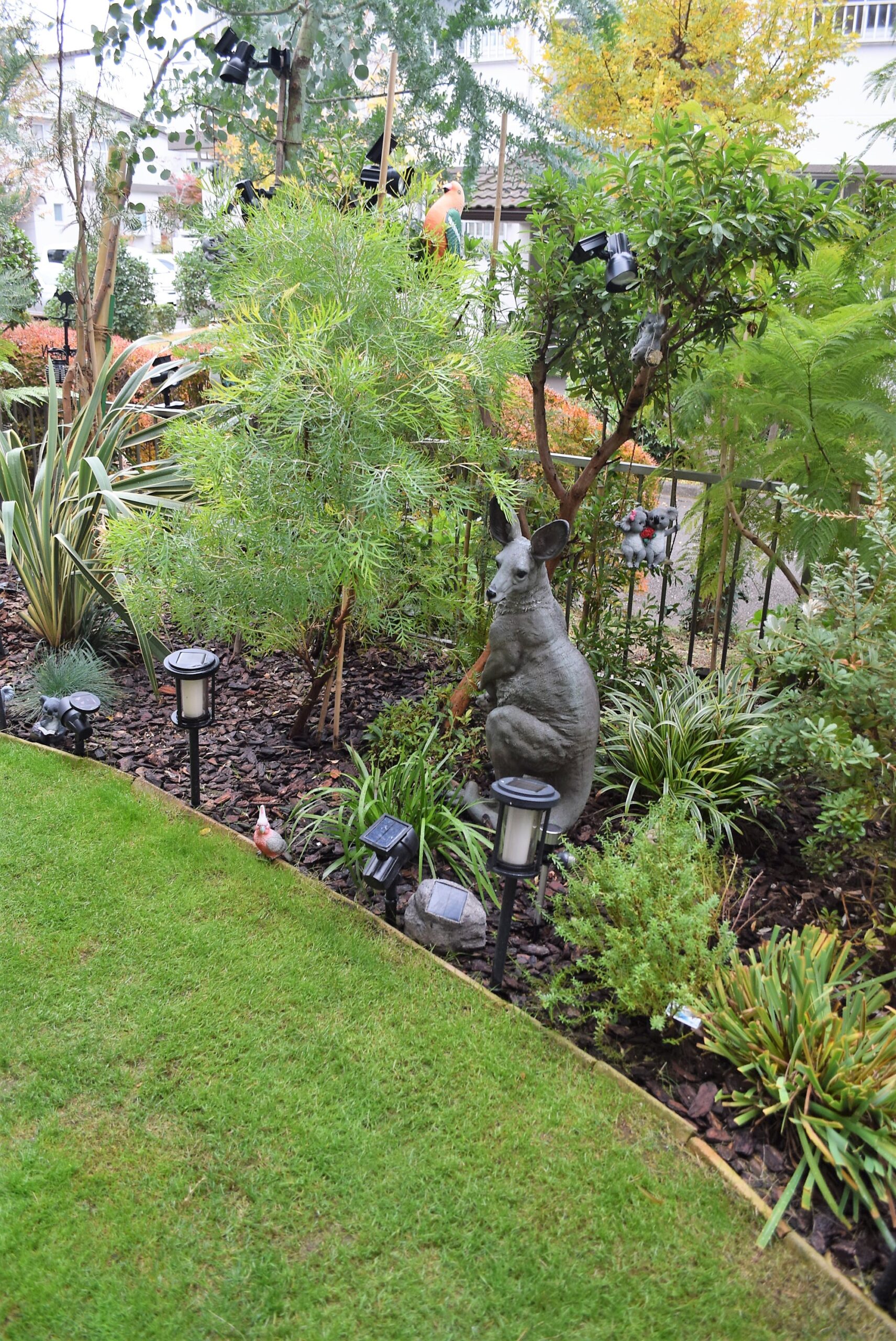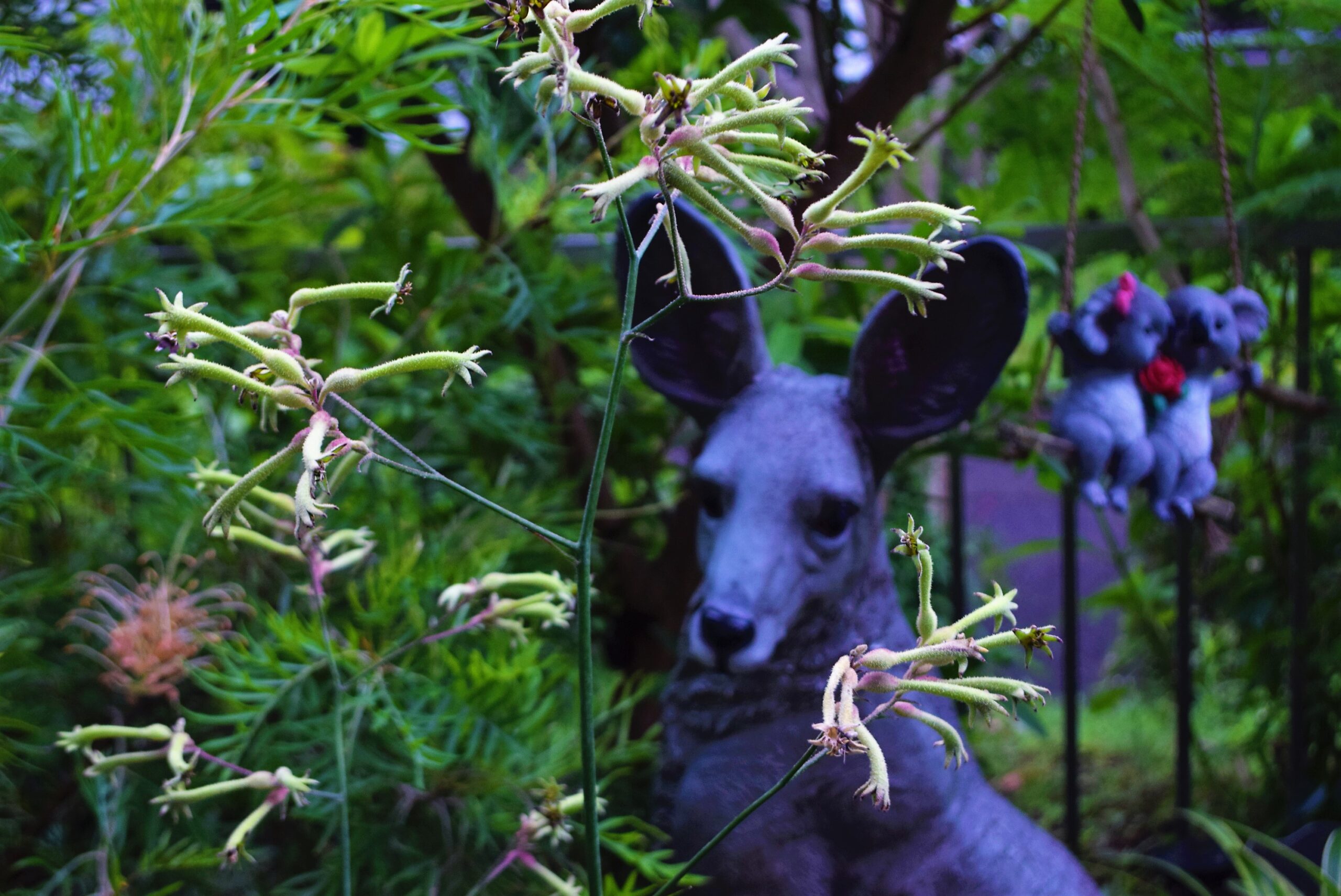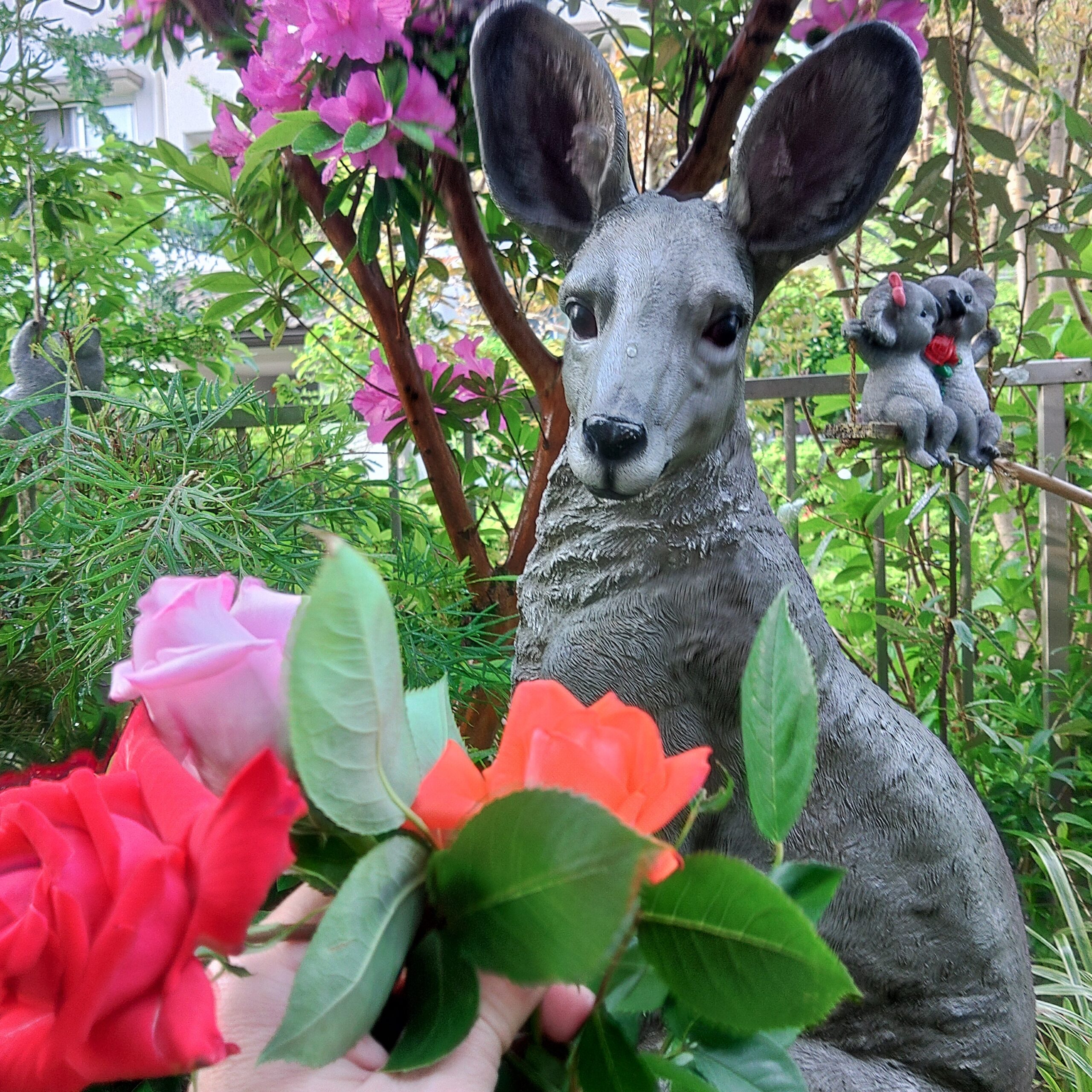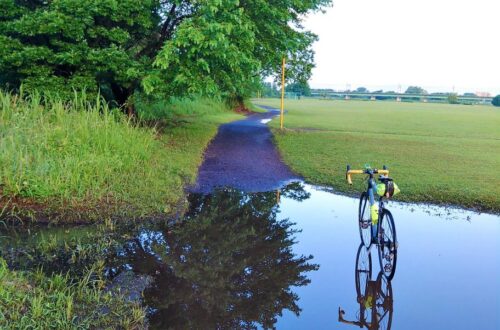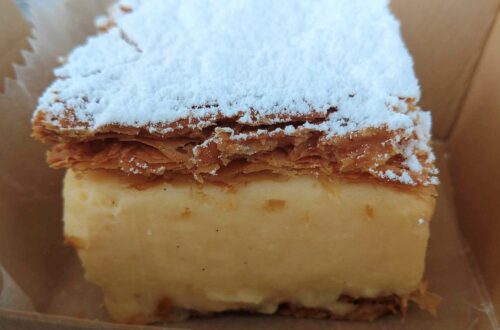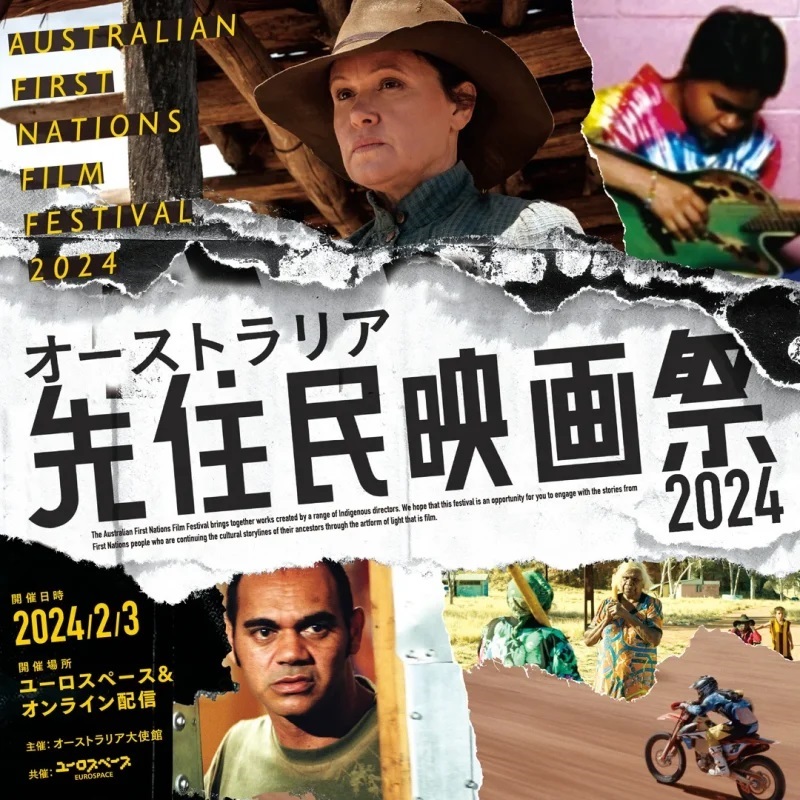Having not had the remotest interest in gardening until well into old age, it constantly amazes me how much hanging out with plants brings me joy and wonderment, and one of the greatest pleasures is being able to share that. On a visit back to Australia a few years ago I bought a lot of native plant seeds and tried to grow them by myself. Most failed, but a few got through, like the hardenbergia, dwarf wattle and, especially, kangaroo paw. With the blog association and our huge kangaroo statue in the garden I really wanted kangaroo paw to grow…
-
-
One of my great delights over the past few years has become gardening, and unaccustomedly I’ve taken on numerous challenges, including growing plants from seeds, and the kangaroo paws I wanted to bloom and flourish more than any other plant have started to flower. I picked up dozens of different types of seeds when I last visited Australia in September-October 2022. I started growing them in February 2023. I’ve now got about half-a-dozen blooming in the garden, either in pots or planted in the ground. All but one is orange. Many of the seeds germinated and propagated, but of the…
-
One of the tiniest, daintiest, cutest little creatures I get to deal with has a back story of incredible strength and resilience, having bounced back from the brink of death to literally be thriving. I’m referring to our dwarf wattle, who is blooming brilliantly in what is proving to be a remarkable journey testifying to the power of nature. The wattle, a miniature shrub version of the better-known acacia trees like the golden and silver wattle, was grown from seed that I brought back from Australia. The dwarf wattle seeds initially sprouted extremely well, but I made the mistake of…
-
Spring has sprung (for today) at least, and the garden at Kangaeroo Corner looks resplendent thanks to early morning weeding, a mow and planting plenty of new plants. Weather helped, too, with delightful sunshine and warmth as the temperature topped 20 for the first time this year. I had planned to transplant some plants bought over the winter next week, when we have a holiday, but circumstances conspired against me and I won’t be able to do it that day, so things turned out perfectly by forcing me outside from just after dawn. With last year’s lawn woes in mind,…
-
Like it or not, and I’m firmly in the “not” camp on this one, winter is here again, but I’ve been kind’ve happy to see how well Kangaeroo Corner has held up this year as the cold sets in. This year is the second year of our garden and for the most part it has thrived. That’s especially fantastic considering the harsh summer we went through, followed by an Indian summer that extended deeply into the autumn. I’ve previously experienced summers in Japan as hot as those of 2023, but none as dry. The lack of rain might have been…
-
After a few months of being jealous of my neighbors for enabling their lawns to evade the effects of the blistering hot summer, I woke this morning to find myself transforming from being green with envy to being verdant with chlorophyll! Kangaeroo Corner’s lawn, which started May in a generally strong state albeit being slightly patchy, took a drastic turn for the worst in early June. At what should have been the onset of the rainy season, I made the mistake of heavily fertilizing the warn to boost its strength for what I expected would be a hot and wet…
-
Little things in life have kept me scrambling and stumbling in such a way it’s hard to get much else done. Work is always much busier in the warmer months. This year has been particularly demanding as our tyrant boss drove more staff out of the door and their tasks were often imposed on me. Early morning starts have been the norm and I’m often exhausted by the time the sun sets. Health hasn’t been great and the teeth I neglected for decades have come back to haunt me with a vengeance, which will result in two more of them…
-
Work is dominating my life at the moment and I have little time for anything else, yet we are fortunate that our kangaroo paws are leading the way in a thriving summer garden. I’ve detailed my attempts at growing Australian plants from seed. While most failed, the kangaroo paw, the ones I really wanted most to survive, are flourishing now. I’ve even managed to give away a few to neighbors, which was really awesome! I hope to be able to spread the joy even further. All this is even better as I thought that I had killed my original kangaroo…
-
Possibly the most meaningful part of my Australian seeds experiment arose today when I transplanted my kangaroo paw seedlings. The great experiment, which I expected would result in me proving to have a green thumb and presenting all my gardening mates with exotic plants has proven only that I am all thumbs. I’ve killed nearly everything I planted, even the everlasting daises and golden everlastings that appeared to be growing so well. I bumped them off by putting them in a hothouse on a boiling hot day, then giving too much fertilizer to the plants that survived. A desert pea…
-
There’ve been better times than the past week, and hopefully the climbing hardenbergia comptoniana planted today augurs a rise out of the doldrums. I couldn’t sleep, so as soon as it was light, I got out into the garden, moving the lawn, weeding and my efforts culminating in re-potting the hardenbergia comptoniana, better known as the Australian native wisteria, which had grown too much for the humidity pods. Most of the seedlings have failed, so hopefully the wisteria will be a shining light. There’s still the promise of kangaroo paw and dwarf wattle. Not much else promising going on. Work absolutely…
